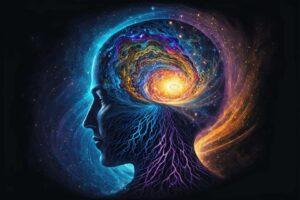Distraction refers to the process of diverting one's attention away from a particular task, thought, or emotion. It is a common experience and can be both intentional and unintentional. While distraction can be helpful in some situations, such as when trying to take a break or relax, it can also interfere with productivity, decision-making, and mental health.
There are many different types of distractions, including external distractions such as noise, visual stimuli, or interruptions, and internal distractions such as thoughts, worries, or emotions. In some cases, distractions can be positive and helpful, such as when engaging in a hobby or spending time with loved ones. However, distractions can also be negative and interfere with daily functioning, such as when procrastinating or avoiding important tasks.
In the context of mental self-help, managing distractions can be an important tool for improving focus and productivity. This may involve setting clear goals, creating a distraction-free environment, or using techniques such as mindfulness or meditation to stay present and focused.
It is also important to recognise the role of technology in modern distractions. The constant availability of smartphones and other devices can make it difficult to focus and can contribute to feelings of anxiety and stress. By establishing healthy boundaries with technology, such as setting limits on screen time or taking breaks from social media, individuals can reduce distractions and improve their mental well-being.
In addition to managing distractions, self-care techniques such as exercise, sleep, and healthy eating can also help to support mental health and reduce feelings of distraction and overwhelm. By taking care of one's physical and emotional needs, individuals can improve their ability to focus and make better decisions.
Distraction
To minimise distractions in your daily life:
* Identify your triggers: Recognise the specific internal or external factors that tend to distract you and develop strategies to address them.
* Create a conducive environment: Organise your workspace to minimise visual clutter and reduce exposure to noise or other environmental distractions.
* Set boundaries: Establish limits on your availability for non-urgent communications, and avoid multitasking whenever possible.
* Manage technology: Turn off non-essential notifications, use website blockers, or allocate specific times for checking social media or emails.
* Practise mindfulness: Engage in mindfulness techniques to help you maintain focus and become more aware of when distractions arise.
* Identify your triggers: Recognise the specific internal or external factors that tend to distract you and develop strategies to address them.
* Create a conducive environment: Organise your workspace to minimise visual clutter and reduce exposure to noise or other environmental distractions.
* Set boundaries: Establish limits on your availability for non-urgent communications, and avoid multitasking whenever possible.
* Manage technology: Turn off non-essential notifications, use website blockers, or allocate specific times for checking social media or emails.
* Practise mindfulness: Engage in mindfulness techniques to help you maintain focus and become more aware of when distractions arise.
To regain focus after being distracted:
* Take a short break: Briefly disengage from the task, allowing your mind to reset before returning to the primary focus.
* Use grounding techniques: Engage in deep breathing or other grounding exercises to help re-centre your attention.
* Re-establish your goals: Remind yourself of the task's objective and the importance of its completion.
* Break tasks into smaller steps: Divide larger tasks into more manageable components to maintain motivation and focus.
* Monitor progress: Regularly assess your progress and adjust your approach as needed to stay on track.
* Take a short break: Briefly disengage from the task, allowing your mind to reset before returning to the primary focus.
* Use grounding techniques: Engage in deep breathing or other grounding exercises to help re-centre your attention.
* Re-establish your goals: Remind yourself of the task's objective and the importance of its completion.
* Break tasks into smaller steps: Divide larger tasks into more manageable components to maintain motivation and focus.
* Monitor progress: Regularly assess your progress and adjust your approach as needed to stay on track.
In certain situations, distractions can be beneficial by:
* Providing mental breaks: Brief distractions can serve as mental breaks, allowing your mind to recharge before returning to a task with renewed focus.
* Reducing stress: Engaging in enjoyable or relaxing activities can help distract from stressors, promoting relaxation and well-being.
* Pain management: Distractions can help divert attention away from physical pain or discomfort, potentially reducing the perception of pain.
However, it is essential to maintain a balance between necessary distractions and those that interfere with productivity and focus.
* Providing mental breaks: Brief distractions can serve as mental breaks, allowing your mind to recharge before returning to a task with renewed focus.
* Reducing stress: Engaging in enjoyable or relaxing activities can help distract from stressors, promoting relaxation and well-being.
* Pain management: Distractions can help divert attention away from physical pain or discomfort, potentially reducing the perception of pain.
However, it is essential to maintain a balance between necessary distractions and those that interfere with productivity and focus.
Related Semantic Entities for Distraction






